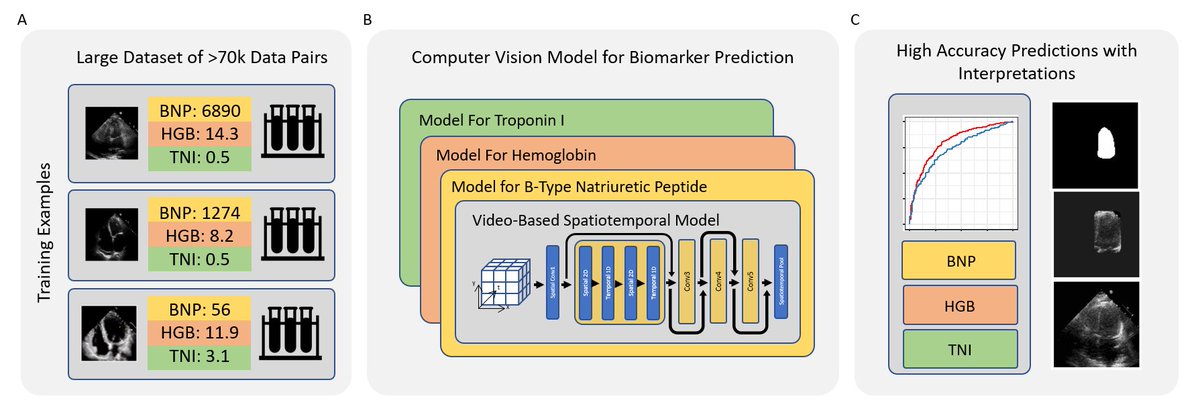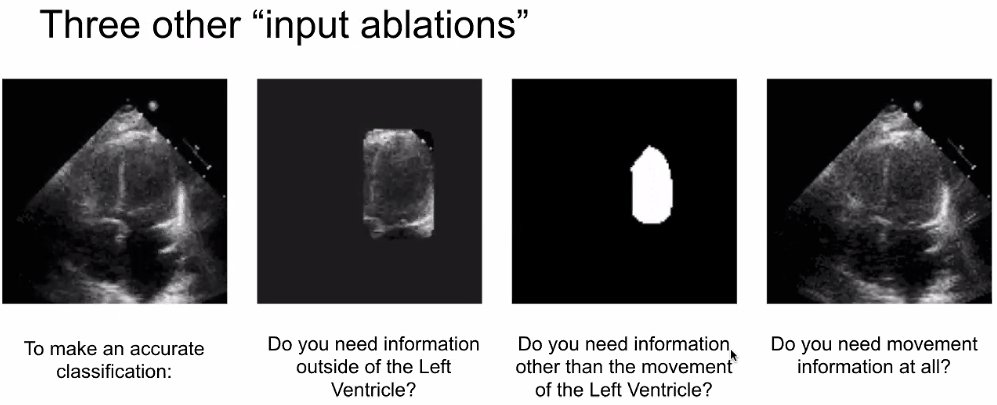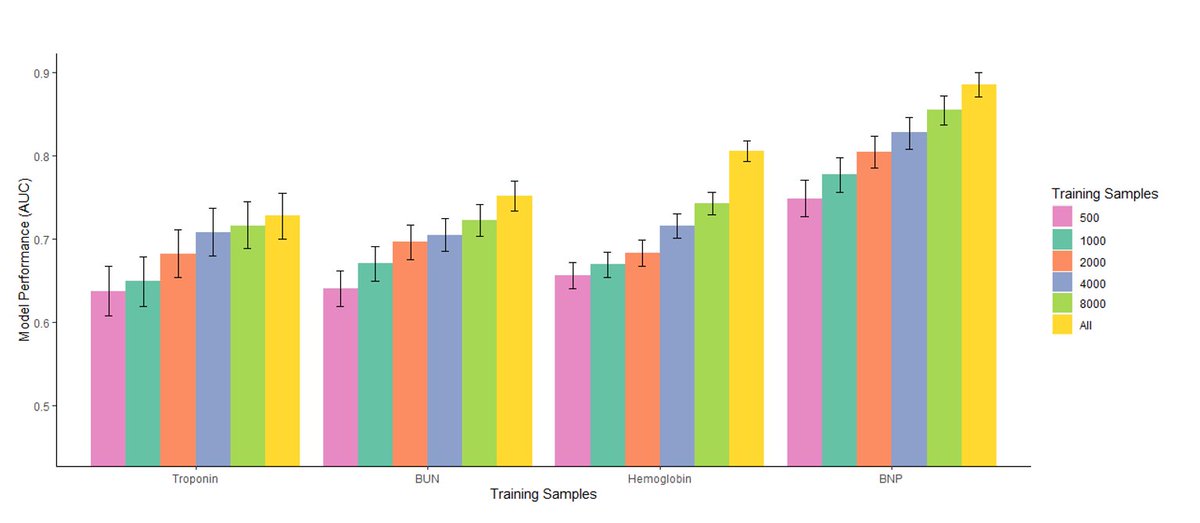We are excited to present EchoNet-Labs, our newest video-based deep learning model to predict biomarkers from echocardiogram videos. @jwestonhughes @james_y_zou @CedarsSinai @Stanford 1/n https://www.medrxiv.org/content/10.1101/2021.02.03.21251080v1
Building upon our prior work with video-based deep learning models on echocardiogram videos, we used deep learning to identify subtle features, hidden relationships, and obtain greater value from commonly obtained medical imaging. 2/n
https://twitter.com/David_Ouyang/status/1242847264164311040
https://twitter.com/David_Ouyang/status/1242847264164311040
Using a large corpus of almost 75k echocardiograms from @Stanford and @CedarsSinai, we trained computer vision models to use echocardiogram videos to predict common biomarkers of both cardiovascular and systemic disease. 3/n
Surprisingly, we found strong performance in predicting biomarkers of both cardiovascular disease (BNP, troponin I) as well as non-cardiovascular systemic disease (BUN, hemoglobin, etc). 4/n
To understand these results, we performed a variety of ablation experiments to try to understand the most relevant imaging features and show predictive value in both texture and temporal motion information. 5/n
We also show that our models can continue to get better with more data – there is a not a clear inflection point in model performance as we scale model training with more training examples. 6/n
Tremendous contributions by our entire team @yuanneal @bryandhe @jeebinger Patrick Botting, Jasper Lee, John Theurer, @JamesETooley Koen Neiman @mattlungrenMD David Liang, Ingela Schnittger, @HeartBobH , @jonc101x @euanashley and Susan Cheng. A model of multidisc collaboration!
And with the aim of both leveling and elevating the field of ML in health, our code is publicly available at https://github.com/echonet/labs @jwestonhughes and ready to plug-n-play data is publicly available https://echonet.github.io/dynamic/ @bryandhe

 Read on Twitter
Read on Twitter






